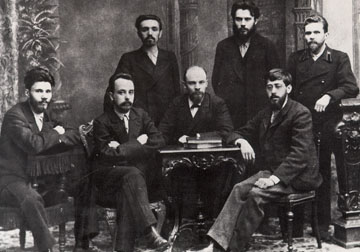 The following essay was written awhile ago and sat around waiting to be fixed up. It can be read as a follow up to notes on Lars Lih’s important book, Lenin Rediscovered: What Is To Be Done? in Context. Only recently the essay was finally fixed up enough to post here.
The following essay was written awhile ago and sat around waiting to be fixed up. It can be read as a follow up to notes on Lars Lih’s important book, Lenin Rediscovered: What Is To Be Done? in Context. Only recently the essay was finally fixed up enough to post here.
*******
It is important to deal with Lenin’s concept of organization in WITBD. The point is not to elevate WITBD into a set of principles that can be abstractly and universally applied. Like any work, WITBD is a product of history. As Lih noted in the beginning of his book such an approach has been an evident enough problem in the history of “Leninism”. However, despite Lih’s attempt to downplay the importance of WITBD in subsequent bolshevik thinking about organization, Lenin’s work—including WITBD—continues to be a necessary reference point for rethinking the role of revolutionary groups and organizations in our own day. By restoring the detailed context of Lenin’s concept of organization and reestablishing its connection to Kautsky, Lih provides the basis to learn from and critique Lenin and Leninism. In doing so he makes WITBD alive again—a renewed and important departure point for thinking about revolutionary groups and organization.
As Lih argues, the importance of WITBD was found in its generalization of already existing practices in the Russian underground, codifying and synthesizing those practices into a broad whole. The generalizing character of WITBD is what continues to make it so valuable today.
The Need for Revolutionary Theory
The first principle that Lenin elaborates is the necessity of revolutionary theory. Lenin writes, “[w]ithout a revolutionary theory there can be no revolutionary movement” (696). A revolutionary theory is necessary to understand the system as a whole from the standpoint of the working class and the oppressed, and their necessary struggle for liberation. According to Lenin, only the revolutionary organization can develop such theory and put it in practical relationship with a workers movement through a program and tactics of struggle. For Lenin in such a role the organization articulates the relationship of the class in motion between its historical tasks and its concrete existence. Finally, not only is the elaboration of theory necessary so is its defense against reformists, or what today would be called progressives
The specific tasks that correspond to the construction of theory and its defense only become clearer when Lenin gives an account of the history of the workers movement in Russia. He argues that the strikes of the mid-1890s signaled an important leap in the form of activity by Russian workers. For the first time they demonstrated “the awakening of the antagonism between workers and owners” which was expressed in the form of collective action and specific demands on the capitalists (702). However, Lenin cautions, these struggles remained “a tred-iunionist struggle” and were “not yet a Social-Democratic one” because “there did not exist among these workers—nor could it have existed at that time—an awareness of the irreconcilable opposition of their interests to the entire political and social order” (701-702). In other words, for Lenin revolutionary theory grasps the totality of relations of capitalism and therefore the standpoint of abolishing the system itself. Trade unionism, on the other hand, is form that corresponds to workers as workers. As a result, Lenin implies, trade unionism without revolutionary theory and its organization leads to a focus solely on distribution of the surplus in the form of the wage.
Continue reading What is to be Done? and the Need for Organization



